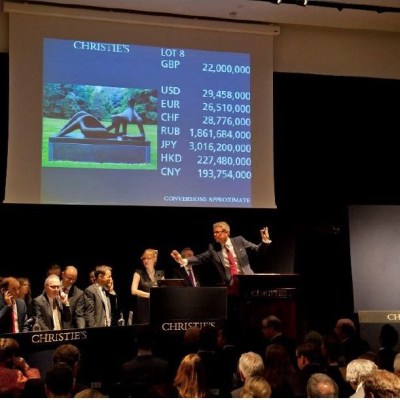On Thursday 1 September the annual Art Business Conference – now in its third year – opened the autumn art market season with a full day of panel discussions about the hot topics affecting the sector.
Located in the exquisite setting of Church House in Westminster, the conference attracted hundreds of delegates from across the UK art world. It was pitched to organisations ranging from art market suppliers to dealers, and the programme touched on several important issues, including the art scene in Dubai; online branding; Brexit and VAT; artists’ estates; the protections of assets; and how to deal with antiques and endangered species. All sessions were filled with experts in their fields who brought a lot to the discussions, confidently chaired by the journalist Georgina Adam.
The session on Dubai ensured that the London-dominated event retained a global outlook, although some rather listless discussion also suggested that the Middle East isn’t high on the agenda of the British market just yet. Myrna Ayad, the new director of Art Dubai, stressed that the city is – just like London – open for business and welcomes external investment.
How to do business in these unstable times was one of the most pressing areas explored during the day. A rather large – and rather male – panel discussed the nebulous field of online branding and the role that trust plays within it. Pragmatically, all the panellists agreed that content is still more important than communication channels, and you need to know your story in order to market it.
A session on artists’ estates was equally illuminating, as it threw light on the important role artist-initiated foundations can have as grant funding bodies – think of the Henry Moore Foundation especially. Artists would do well to think about their artistic legacies – an agenda pushed by Loretta Würtenburger, founder of the new Institute for Artists’ Estates. But there is still much to be done to educate people in this field: it may be big business for galleries, but there is uncertainty among buyers and museums.
The day started and ended – inevitably perhaps – with the fallout of Brexit on the art market. MP for Kensington and president of the BADA, Victoria Borwick, stated in her opening address that the UK is open for business, a global world is waiting, and that Europe’s role is diminishing. A session on the Union Custom Code (UCC) and Brexit was highly anticipated but made for a rather dry discussion about the specifics of VAT and Temporary Admission that probably left non-experts in the dark. But with border controls looming, the movement of art objects won’t get easier – nor cheaper. Kevin Lay, operations director at sponsor Arcis, went further in his closing remarks when he spoke about his hope that Brexit would turn out to be a ‘small hiccup’ in history. He also took the opportunity to promote the new edition of the conference in New York in spring 2017. Let’s hope the US market, still booming, is as outward-looking as the UK.
One of the most illuminating contributions to the day was Louise Prior’s comparison of the diamond trade and the art world. As executive director of the World Federation of Diamond Bourses, she spoke about a business not unlike the art market that has had to get its act together in the past decades. With strict codes of conduct and strong lobbying groups it now speaks internationally with one voice – something the art market could learn from.
Those who missed the event can download the talks here. The next Art Business Conference in London will take place on 6 September 2017.



